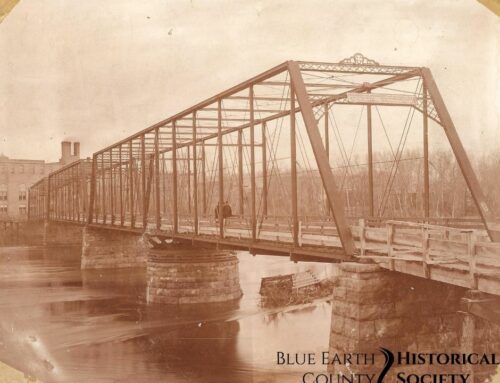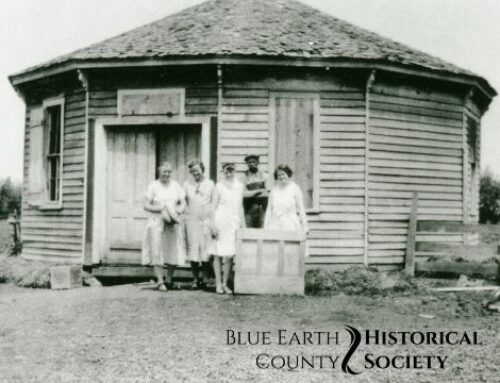Nestled beside Minnesota Lake and wedged between Mapleton and Waldorf lies the Township of Danville. Danville is a small, flat area of land speckled with marshes and lakes. It is a township known for its farming and fishing as well as historical significance.
Due to the flat, prairie-like setting, Danville attracted many settlers in the 1800s. These settlers mostly consisted of German and French immigrants fleeing their homeland in search of opportunity. The first of these immigrants was Hector Sharp who settled in Danville in May 1856. John Kremer soon followed along with his wife and four children in October of the same year. Sensing this gradual growth, more farmers slowly flowed to the township.
In 1858 Blue Earth County mandated that all townships must have a name. On October 14, 1858, originally called Jackson was officially named Danville. This is mainly due to the persuasion of a citizen named Lucious Dyer, who wanted to name the township after his home in Vermont.
One of the most popular sites in Danville that also attracted national attention was the Schostag Mill. The mill was constructed by German immigrant Gottlieb Schostag who moved to America in hopes of expanding his success in mill making. The mill he constructed was a large structure made from hard stones and stiff oak timber. In such a small and open township, the mill was recognizable from miles away. Its exterior was painted a creamy white and topped with roofing shingles. Schostag hand shaped each individual stone himself with just a chisel and mallet. This delicate process took him weeks and is one of the reasons the mill remained a popular marvel for years. After the pieces were constructed he, along with some fellow farmers, had to haul the pieces to a spot near Minnesota Lake where the mill was reassembled. The process was dangerous and risky but in the end, he prevailed. The mill was finished in 1864, standing at a height of 40 feet. Four long arms protruded thirty-five feet from the base and produced 30 horsepower. Local farmers would travel to his mill to have their wheat and rye turned to flour. Even with his reliable customers Schostag barely made back the money he spent to build the mill. One day while working outside, one of the arms struck him on the head. Terrified by this ordeal, he tightened security on the mill and refused to let his customers in for fear of their safety. Schostag’s severe rules, paired with his strict religious morals, the mill owner was often misunderstood and the subject of gossip. Schostag remained this way until his death in 1903. The mill remained a popular tourist attraction until 1939 when it mysteriously burned down.
Because of the township’s remote surroundings, many of the residents could not afford to travel to another city for church services. Due to this, a couple of small churches were erected in the township. The first of the churches was St. John’s Catholic Church. Previously, the mass was held in the homes of citizens, but due to the growing community, the congregation decided to expand. St. John’s was built in 1865 for a cost of five hundred dollars and included a small graveyard. The building was later taken down but some worn gravestones still lie there today. The other church built was St. John’s Evangelical Lutheran Church. Constructed in 1870, the building served as a church until it was transformed into a school in 1886. Many small schools also emerged around that same time including Shanahan, Kraus, Green Meadow, Beyer, and Danville School.
Because of its unique historical background and location, Danville proves to be an interesting and intriguing township. To this day it continues to be an important farming township that has an interesting past and hopeful future.
Image from the Mankato Free Press, November 9, 1981 page 17 column 2





Leave A Comment